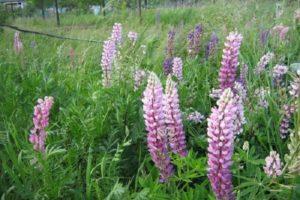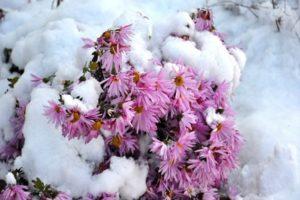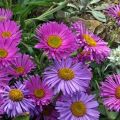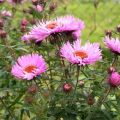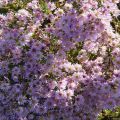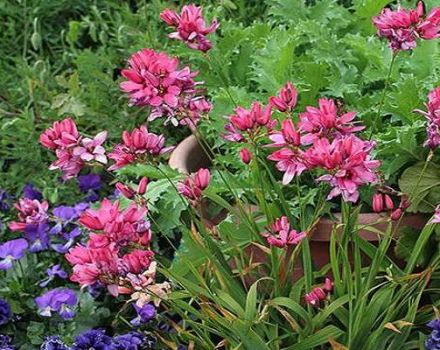Description and characteristics of annual asters, planting and care features
One of the most common and picky flowers that our gardeners love so much is the annual aster. It's amazing how many varieties it is presented. The cultivars differ in shape, flower size and amazing color range. And the main feature of Callistefus is complete unpretentiousness, which allows even a beginner to grow a flower garden.
Description and characteristics of annual asters
Annual asters have characteristic advantages that differentiate them from perennials and other similar flowers:
- great variety;
- picky about soil conditions;
- the plant quickly reaches the flowering phase;
- there is no need to care when forming a bush;
- flowering lasts a long time, up to 50 days;
- survives short-term frosts.
Varieties of flowers
Now there are about 40 groups of annual asters and more than four thousand varieties. Plants are usually classified by:
- bush growth;
- by the arrangement of inflorescences;
- for the purpose of growing.
Important! Before purchasing seeds, it is imperative to make sure that the specified variety matches the content. Therefore, you should buy seeds and seedlings only from trusted sellers.
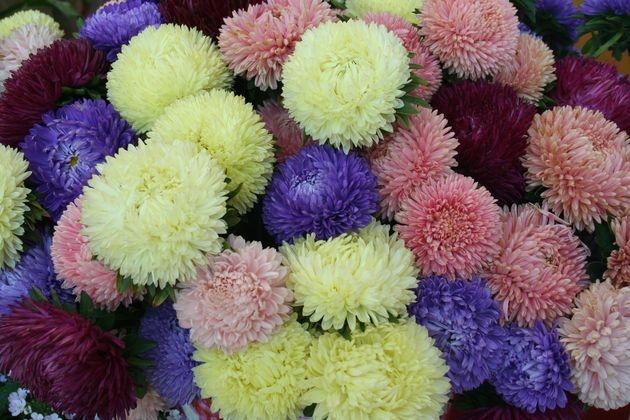
Bouquet
As the name suggests, the bouquet aster is grown to create vibrant bouquets. It is of medium height and blooms profusely. It is recommended to sow the seeds at the end of March, and with the appearance of the first shoots, they can be planted in open ground according to the 5x5 scheme. Seedlings can be moved to the flowerbed in mid-May, June.
Duchess
One-year undersized aster, excellent for breeding at home. The average height of the bush reaches 30 centimeters, the circumference of the flowers is from 7 to 12. Flowers are often grown on windowsills, in pots and containers. The plant is resistant to brief frosts, and blooms up to stable severe frosts.
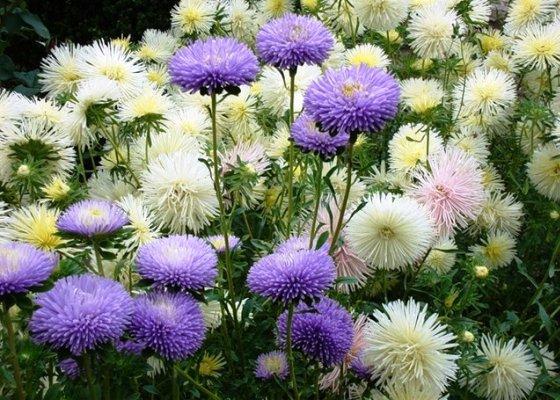
Bush cut
Cutting aster, on the contrary, has a large growth, up to 75 centimeters, and small flowers (no more than 5 centimeters). The bush cut aster blooms for a surprisingly long time - from June to September. Grown in the open field. Astra is resistant to climatic changes and various diseases. They are grown exclusively in seedlings.
Needle
Aster Eagle is a tall plant with massive double inflorescences.The plant blooms late, the period lasts from mid-August until severe frosts. And the lifespan of a cut flower is 2-3 weeks. When leaving, it is required to provide a certain amount of sunlight and completely eliminate the stagnation of moisture in the soil.
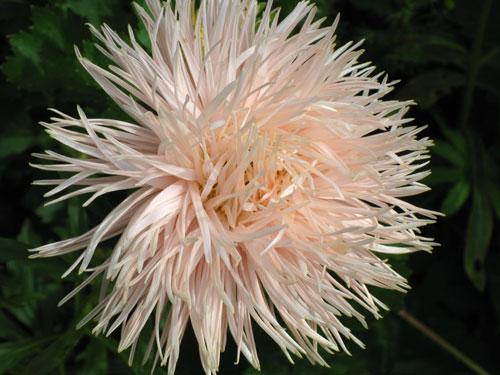
Peony
The amazingly beautiful Astra Pionovidnaya has a stable bush resembling a cone (thickened from below, thinned towards the top). The flowers are large - up to 10 centimeters, have a spherical shape. It does not bloom for long - from mid-August to late September. It is recommended to plant by seedling method.
Pinkish
Aster Rosovidnaya is distinguished by a pleasant pink inflorescence and shrub height (60-70 centimeters). The shape of the bush is stable, conical. Inflorescences on one plant - up to 25 pieces. The most popular representative of the variety is Lady Coral. Retains decorative appearance in all climatic conditions.
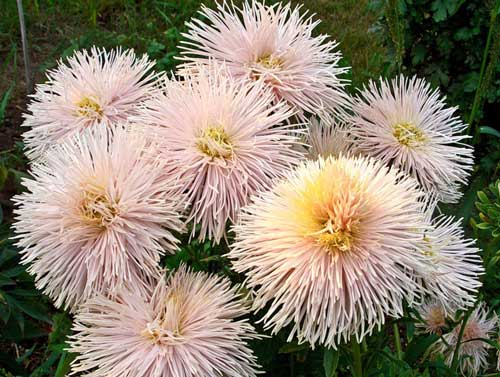
Claw
The classic medium-sized aster is popular in Central Asia. Great for city beds and flower gardens. Pleasing to the eye already from July with dense foliage and spreading ray inflorescences. Has many varieties: Fire King, Chinchilla, Jewel, Carmelita.
Chrysanthemum
Large flowers with wide, pointed petals are a characteristic feature of this variety of asters. During flowering, the plant is easy to confuse with chrysanthemum, but the medium bushes (up to 60 centimeters) and the amazing brightness of the flowers do not allow you to be mistaken. The plant is distinguished by multiple flowers and a long shelf life.
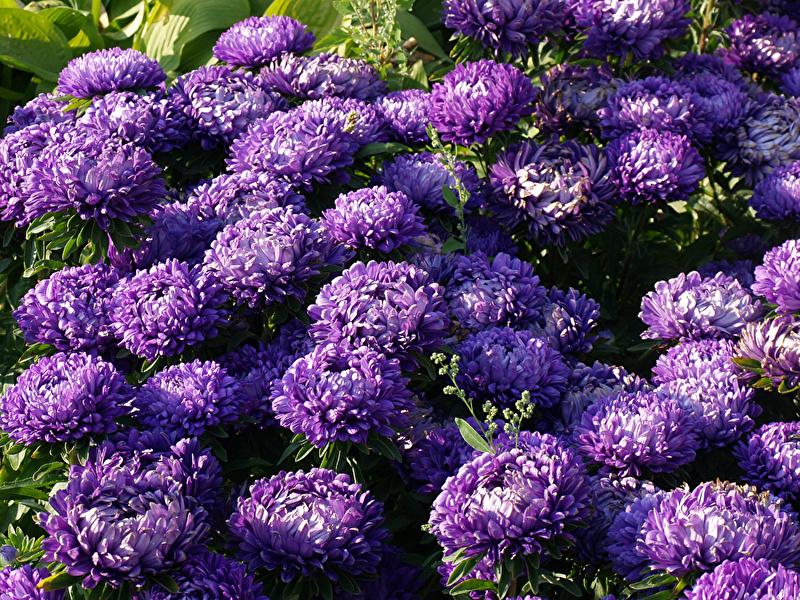
Venichnaya
A tall variety of annual aster refers to early flowering. The inflorescences are terry, compacted, with many tube-shaped petals. The variety is often used to decorate flower beds and a summer cottage.
Spherical
Aster Globular - the most spectacular of all the bushes. The plant is medium-sized, with small bright inflorescences. Flowers completely cover the trunk and form an amazing dome. Spherical aster is not used in bouquets, but the plant looks elegant on the site.
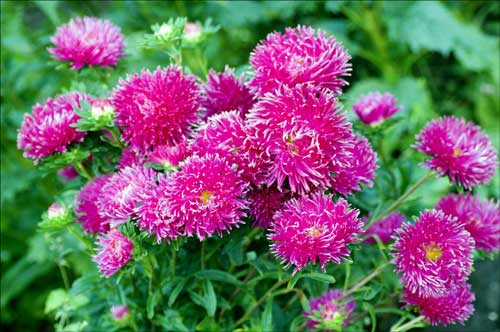
Landing features
For the annual aster, as for any other plant, the soil for planting plays the most important role. Therefore, experts recommend preparing the soil in the fall: dig up, moisten, saturate with fertilizers. Aster can be planted in two ways: seedling and reckless.
Seedling method
The seedling method involves sowing seeds in special boxes, and only after the first leaves appear, the plant can be planted in open ground. The seedling method provides protection against possible changes in climatic conditions and allows you to provide proper timely care.
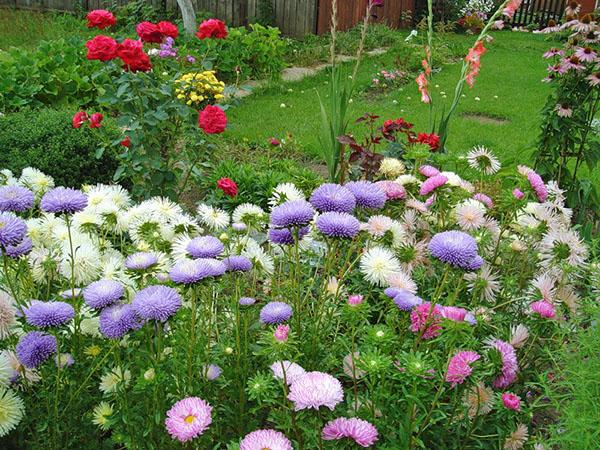
Seedless way
Seeds can be planted in open ground for the winter, but this is risky. As long as the seeds are in the soil, they are not in danger, but the germinated plants can freeze. After the appearance of the second strengthened leaf, it is recommended to thin out with the calculation of a distance of 15 centimeters between the bushes.
Aster care
Annual asters are extremely unpretentious plants, therefore they do not need special care. It is required initially to provide fertile soil and timely watering. Sometimes it is recommended to weed the beds to improve the aesthetic appearance. And if you feed the plants 1-2 times, then the inflorescences will be larger, and the stems are more stable.
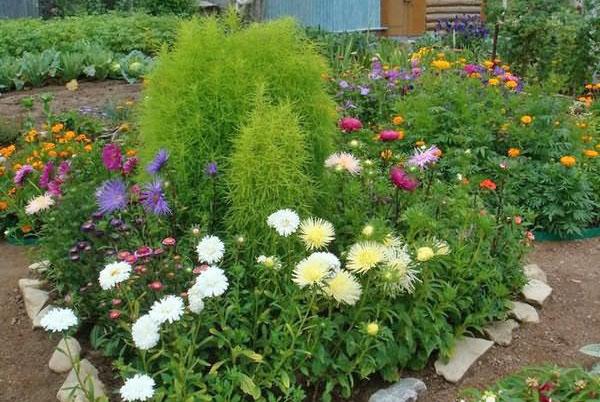
Watering
Excess water is detrimental to an annual aster, so watering should be moderate. There is no standard watering regime for the plant, it is calculated based on the soil absorbency.
Important! Water stagnation in the soil should not be allowed - these are the best conditions for the appearance of rot.
Fertilizer
When applying fertilizers for annual asters, it is recommended to act according to the following scheme:
- 2.5 weeks after planting seedlings in the ground, it is required to fertilize the plants with a standard set of mineral dressings. The amount is calculated as follows: 50 grams per square meter.
- At an early stage of the emergence of buds, you can add an additional portion of fertilizers containing potassium and phosphorus.

Loosening and mulching
Important! Avoid the formation of a hardened soil crust at the roots of Callistephus. For this, it is recommended to resort to loosening and further mulching.
However, do not bury the roots deeply. Also, during this procedure, you can easily remove unnecessary weeds.
Caring for asters after flowering
Since asters are annuals, there is no need to count on a long life for a flower, but many grow seeds on their own. For this, it is not recommended to get rid of the inflorescences, but to wait for the seeds to appear. Collect them, and only then get rid of the bushes. It is important to capture the root system, so that it does not interfere next year.
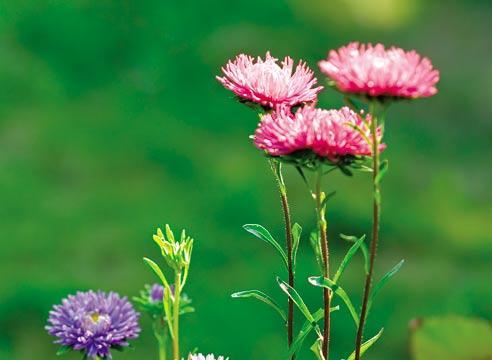
Diseases and methods of their treatment
Diseases that often affect annual asters:
- Fusarium wilting.
- Late blight.
- Rust.
- Spotting.
- Brown rot.
Many gardeners are of the opinion that it is easier to destroy infected plants and plant new ones than to treat them. However, symptoms appear when there is an excess of nitrogen or moisture in the soil. A decrease in indicators is often enough for a complete recovery.
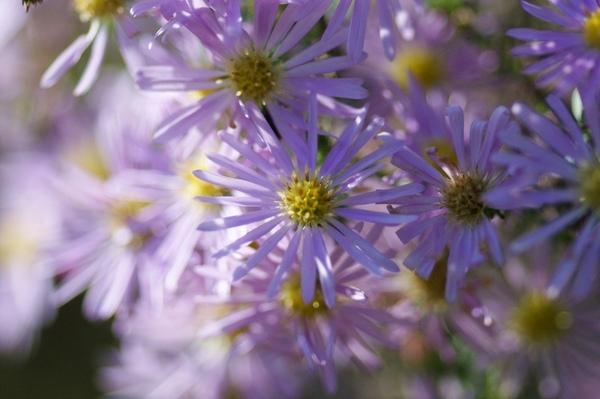
Pests and methods of their destruction
The main pests of annual asters are:
- plowed slug;
- ordinary earwig;
- sunflower moth;
- slobbering penny;
- meadow bug.
Special means of processing, elementary digging and processing of borders with lime help successfully fight pests.
Possible difficulties in growing asters
Annual asters are unpretentious, and do not cause additional difficulties for gardeners. However, it can sometimes be difficult to select the watering regime. With a high neglect of flower beds, it is also difficult to get rid of weeds and excess plant shoots. But the beauty of the flower garden is worth it.
